This dialectal variation seems to sound funny to the ears of those in the urban areas in Cebu. However the lilting air in the voice of the people in Dalaguete for me is but a joyous outlook to a pastoral rural life wrapped with simplicity and daily toils.
Getting There
I had the chance to visit Dalaguete twice this year with friends. Peripatetics that we are, there is a need for us to trek the most famous high spot in southern Cebu – Osmeña Peak. Osmeña Peak is the highest spot in the Mantalongon mountain range which stretches from Dalaguete to Badian.
In both trips, we took the bus from the South Bus Terminal to Dalaguete. The fare would range from PhP80 to PhP100. We then made our way through the Dalaguete – Badian National Road by motorcycle (locally known as “habal-habal”) to the agricultural barangay Mantalongon. The fare would vary from PhP30 to Php50. The fare and the start of trek towards the peak would depend on where the motorcycles could no longer inch into. This is a critical aspect as there are two possible ways on where to start trekking. However, this for me is trivial since trekking is part and parcel of every outdoor adventure.
Sprawling Greenery
The rural area near the peak is sprawling greenery.
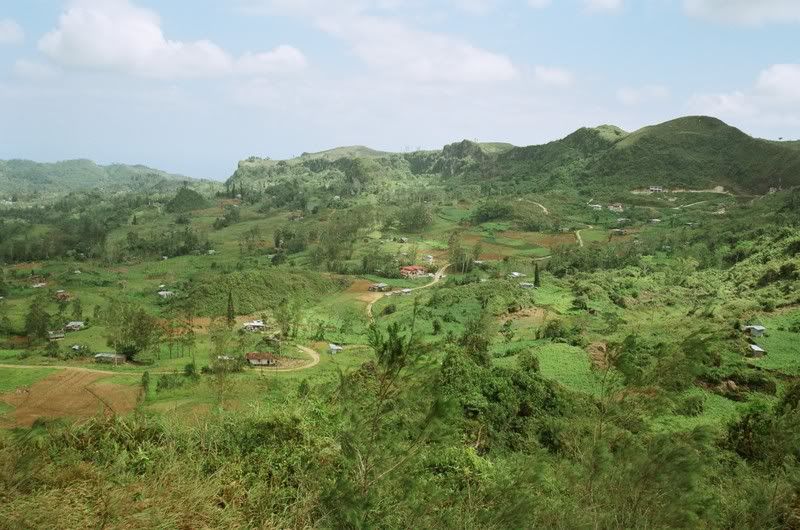
Tracks of land are covered with sayote and Western and Chinese cabbages. Conifers add verdant to the area. In our recent visit, we chanced on discussing about English names of the common vegetables. I was asking for the English name of sayote and our motorcycle driver informed us that he had worked in a vegetable supplier in Baguio for quite some time and that there is no English name for sayote. The internet does work wonders most of the time. Sayote is an accepted alternative name for chayote.
Vegetable Kingdom
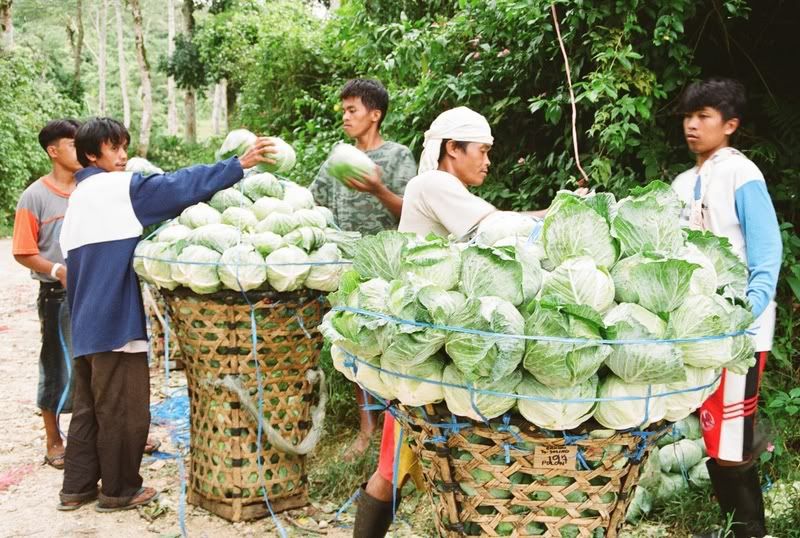 The people of the area are generally warm and amiable. Along the road, one may meet kids who would readily smile for the camera.
The people of the area are generally warm and amiable. Along the road, one may meet kids who would readily smile for the camera. 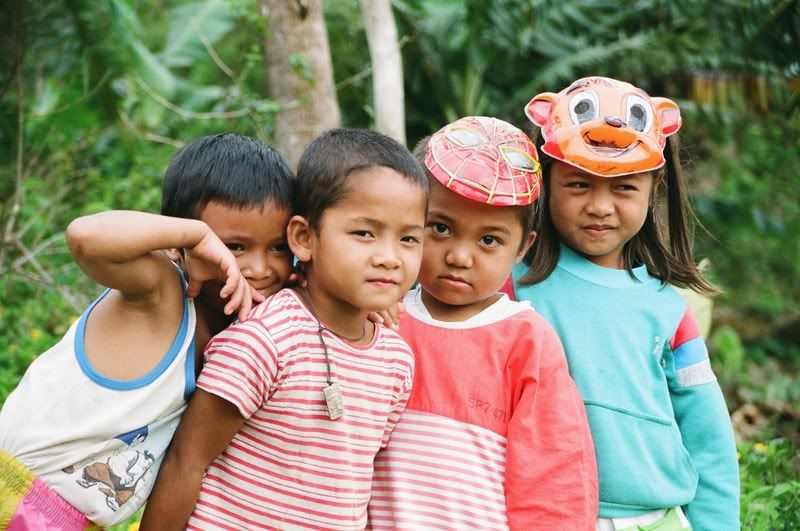
Mantalongon is said to be the vegetable kingdom of Cebu. The well-worn trails bore witness to the hard labor that farming requires for the locals in the area.
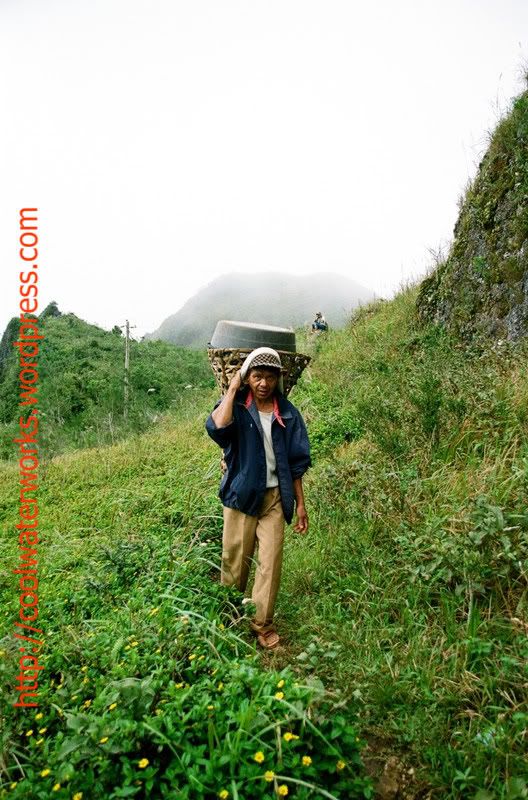
Vegetables are carried to the valley by means of large baskets worn through the head. Young children need to go through this silent rite of passage to learn how to earn a living.
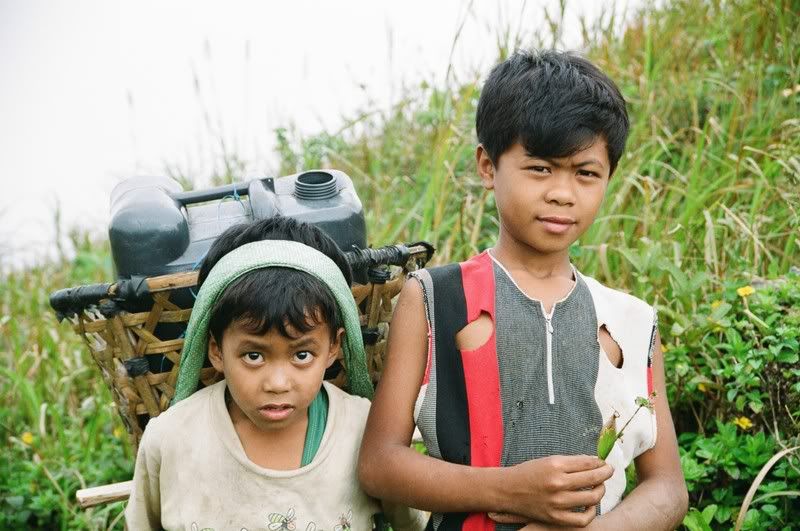
Being a constant witness to this cycle, it was for me an affirmation of the culture that we need to cultivate on our outlook towards the food on our tables: we indeed need to pray for the hands that helped prepare for the food that we are about to eat.
Deformed Kisses
The top of the Mantalongon range is characterized by many hills that look like “deformed” chocolate kisses.
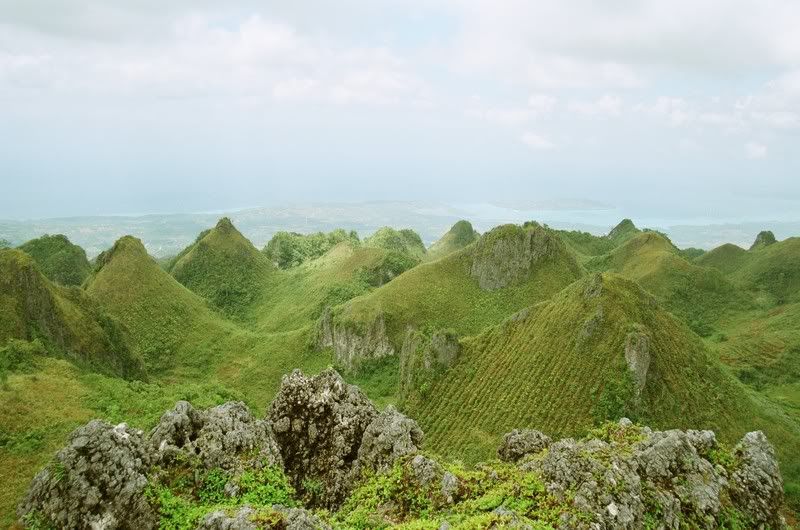
One may be reminded of the Chocolate Hills in Bohol. Osmeña Peak is said to be the highest of these hills. This peak provides the best vantage point to view the other hills. On clear days, Badian Island is visible. On our recent visit, heavens met us with wispy clouds.
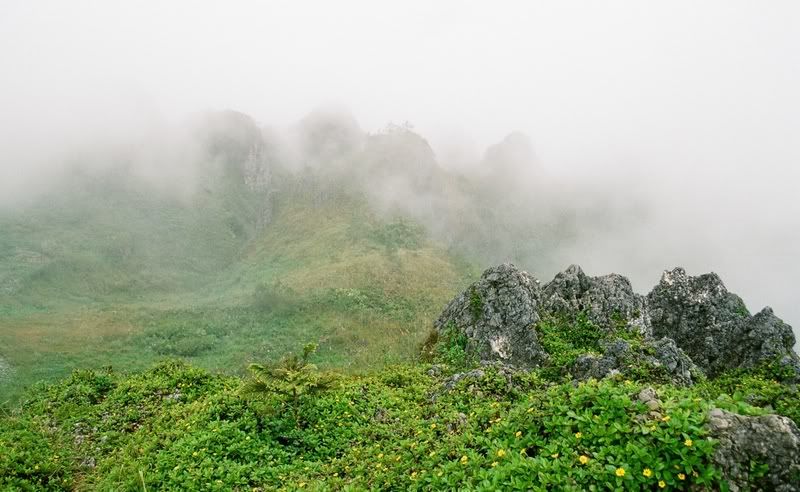
Being soaked in the clouds is an exhilarating experience for some. One may need to prepare thick clothing and additional protection for electronic gadgets.
What's on Top
Vegetation is far from sparse at the top. Rows of cabbages line up beside the hills.
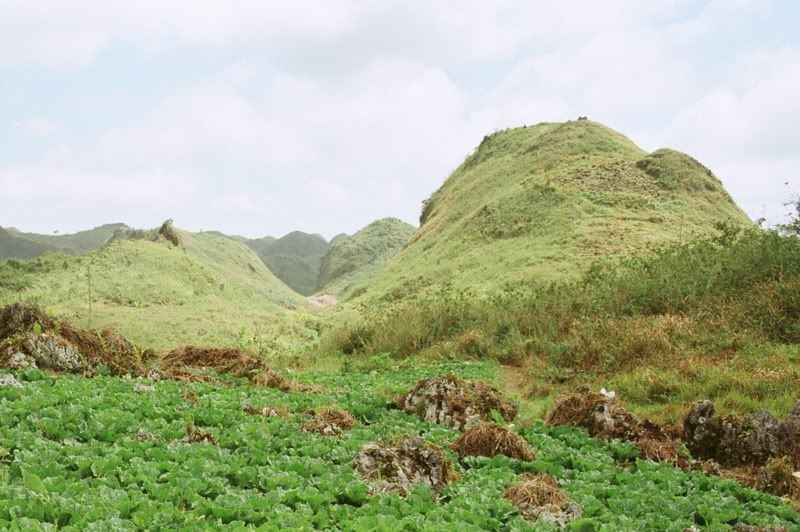
Though no fully grown trees can be seen, there are signs on attempts to grow conifers in the area. There were several stunted ficus and ipil or merbau trees. Moss is literally spawning everywhere even on the branches of small bushes.

The hills are covered by shrubs that are probably from the Asteraceae family due to the close resemblance of its small yellow flowers to sunflowers and mums.
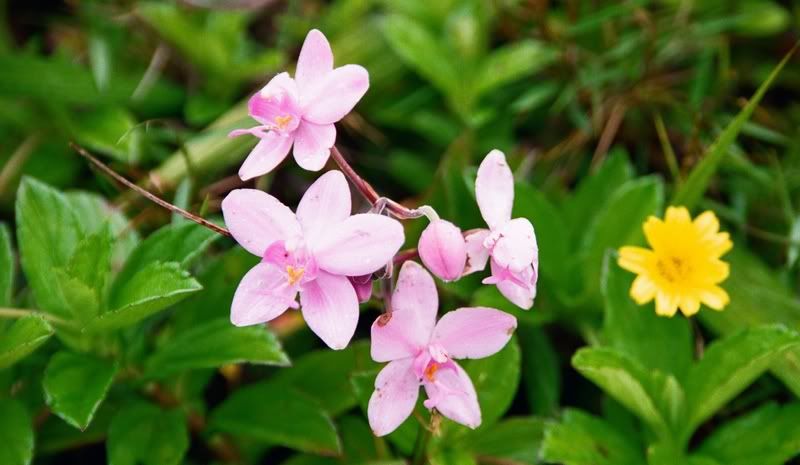
White and pink ground orchids also litter the hills. Thus fields of greens are dotted by yellow flowers with occasional accents of pinks and whites. Red hibiscus can also be seen in the area.
With the two visits to Osmeña Peak, I seem to be convinced that the Mantalongon Range used to be underwater due to the strong presence of exposed limestones from the hills as well as the numerous sedimentary rocks in the area.
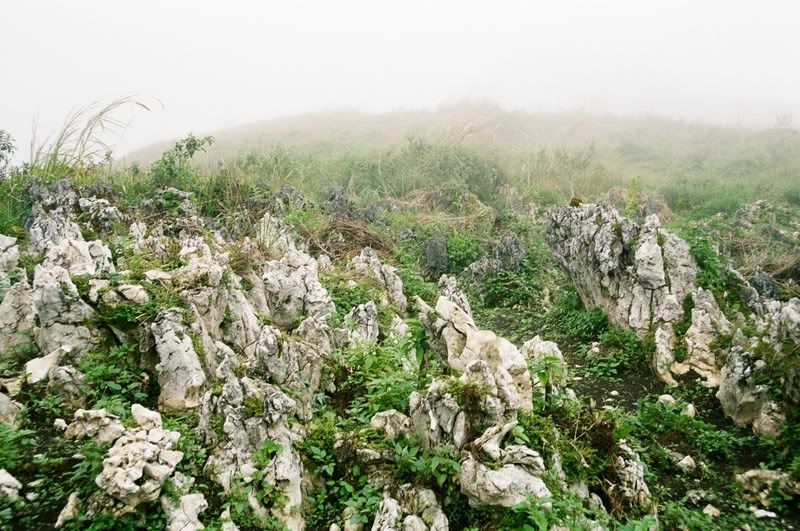
This mountain formation could not be possibly due to volcanic events. The presence of the hills or mounds seems to imply of a similar geological process that the Chocolates Hills have undergone. I am however basing my conjectures on the earth science subjects I have had as a student and I am no geologist. It is for me pure amazement to see those lessons again with my bare eyes.
My Take
With the visits that I had made, I am still craving to see more. Dalaguete has much to offer in terms of its natural resources and the venue it offers for peripatetics like me. In spite of the harshness of living that I have seen, the people of Dalaguete should find reason to continue with their joyous lilt.
Every green pasture is a sign of life.
Life is a celebration.
(29 October 2007)
